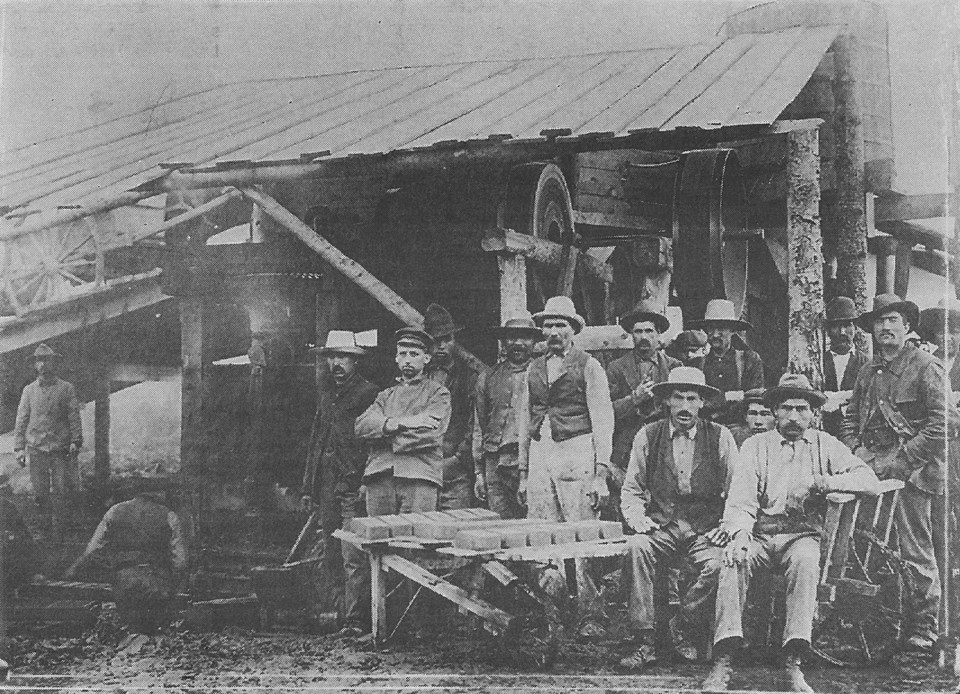What’s in a Name?
The Gazette is looking at the history behind the names of places in St. Albert in light of the city’s move to rename the Grandin neighbourhood. Curious about a place’s name? Send it in to [email protected] so it can be examined in a future story.
Most St. Albert residents have probably walked past the Perron Street clock tower at some point. Some might recall that it was built as a science experiment. A few might know about the tower’s links to St. Albert’s first commercial industrial operation, its second mayor, and Eastbrick Place four kilometres away.
A History of Street Names in St. Albert says Eastbrick Place was named for a brick foundry that once employed many in St. Albert. While it doesn’t specify which one (there were at least two in operation in St. Albert’s early days), the most likely candidate is the St. Albert Brickyard, which once stood on what is now Bellerose Drive (formerly North River Road).
Bricks by Perron
Alberta didn’t have many brickyards prior to the 1890s, as most settlers made their homes out of logs and/or sod, historian John Manson writes in Bricks in Alberta. St. Albert had a church-run brick factory in the 1880s, Black Robe’s Vision reports.
Demand for brick soared in the 1880s with the arrival of the railroad and migrants knowledgeable in brickmaking, Manson writes. By the 1890s, the province had a new brickyard opening almost every spring for the next 25 years.
Frequent fires and widespread wood and coal heating made brick the material of choice for homes and chimneys in the early 1900s, said Malcolm Sissons, brick historian and vice-president of the Historical Society of Medicine Hat and District.
Fleuri Perron established the St. Albert Brickyard in early 1900 after discovering a rich clay deposit in this community, A History of Street Names reports. The brickyard was St. Albert’s first commercial industrial plant.
Not much is known about the St. Albert Brickyard apart from the fact it had about 20 employees. Sissons said his research suggests the brickyard likely used the soft-mud process to make its bricks.
The soft-mud process sees a brickmaker uses a mixer (often horse-powered) to mix clay with water, giving it a soft, doughy consistency, Sissons said. Brickmakers toss the clay into brick-shaped moulds, knock the lumps loose onto a board, and let them dry for several weeks. (Some bricks end up with fingerprints on them during this process.) The lumps then roast in a kiln at about 1,000 C for a week and come out as finished bricks.
1907 saw the introduction of the stiff-mud method of brickmaking to Alberta, where machines squeeze clay through an extruder and cut them into lumps with wire, Manson writes. Sissons said some 98 per cent of bricks made in North America today are made with the stiff-mud method.
It’s unclear if the St. Albert Brickyard ever switched to stiff mud; a 1908 Edmonton Bulletin article said the factory had recently remodelled to be “among the most up to date in the province,” but did not get into specifics.
Bricks of time
Perron would later become St. Albert’s second mayor and (much later) the namesake of Perron Street. Sometime prior to 1912, he sold his brickyard to Herbert Jacobs and moved on to other ventures.
The First World War drove many Alberta brickyards out of business, Sissons said — all the workers went off to war, and brickyards were deemed non-essential to the war effort. The St. Albert Brickyard ceased operations in 1932, Manson writes.
But its legacy lived on. Manson noted the Alberta Hotel in Edmonton was built with bricks from the St. Albert Brickyard. That hotel was dismantled to make way for Canada Place in 1984, but later rebuilt from its original bricks in 2010.
There’s also an indirect legacy in the Perron Street clock tower, which was built in 1995 to help the University of Alberta perform an experiment on how residual stresses in bricks affect brick walls. I-XL Industries donated the bricks for the project; Sissons was the company’s president.
“The type of brick on that [tower] was a product we called Perron Brick,” Sissons said, which was a red-toned wire-cut brick they named after the old St. Albert Brickyard.




